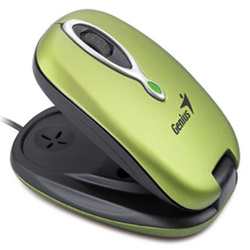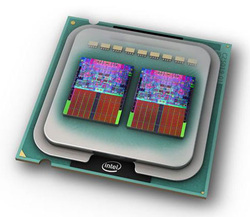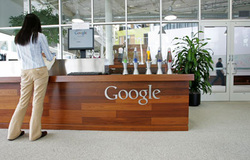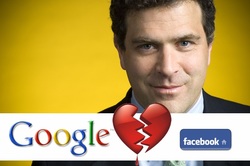 hi bloggers....
A cup of steaming hot coffee and a painkiller may be the answer to that hangover from binge drinking, says a new study.
Researchers at Thomas Jefferson University in Philadelphia, Pennsylvania, conducted the study in mice, in which they injected doses of ethanol.
The doses usually trigger headaches in people prone to migraine. Michael Oshinsky and his colleagues found that four to six hours later, the skin around the rats' eyes became sensitive to touch, indicating that they were suffering from a headache, reports New Scientist.
Oshinsky said that the rats were not dehydrated and they received pure ethanol. Also, contrary to the fact that acetaldehyde build-up is the reason for hangovers, the rats didn’t suffer the headache from it because they were given drugs to block conversion of acetaldehyde into acetate.
The reason caffeine and over-the-counter anti-inflammatory drugs seem to provide relief is because they block some of the effects of acetate.
If that really is the case, the best time to take them would be about 4 hours after drinking, when acetate levels begin to increase.
Dan Levy at Harvard University is wary of calling the rats' headache a hangover, but says the study is an important step towards understanding alcohol-triggered headache.
The study appears in PloS.
 hi bloggers...
Experts have come up with a new application for the iPhone that has the ability to read minds.
The XWave enables users to control on-screen objects with their minds as well as train their brains to control attention spans and relaxation levels.
It works via a headset strapped around the user's forehead, plugging into the iPhone jack.
A state-of-the-art sensor within the device can then read the user's brainwaves through the skull, converting them into digital signals before displaying them in various colours on the iPhone screen.
And as the mind focuses on a particular task the graphics change, indicating the user's level of concentration or relaxation.
The device is the latest in the field of emerging mind-controlled games and devices.
Innovations giant PLX Devices developed the high-tech sensor using technology that has for years been used by doctors to treat epilepsy and seizures in patients.
However, PLX Devices founder and CEO Paul Lowchareonkul said it was a matter of time before such contraptions entered the mainstream.
"The human brain is the most powerful, complex thing in the universe, and for the first time, we're able to harness its amazing power and connect it to everyday technology. With the development of 3rd party apps, the potential for innovation is limitless," the Daily Mail quoted him as saying.
 hi bloggers....
Though technological innovations are more than just anticipated, some offerings tend to surprise users with their distinct qualities. Inspan Infotech recently launched the Genius Navigator 380 VoIP mouse, bringing in one such marvel for its Indian consumers.Blending together capabilities of a mouse and Internet phone, this device extends superior performance in a compact size.
Users who are constantly on the move face issues due to poor mobile phone signals time and again. This latest product from Genius has been crafted for not only resolving these problems but also enabling customers to make conversations in crystal clear sound quality. The integrated LED indicator of the device flickers every time customers receive an incoming call. It also extends support to various Instant messengers including MSN, Skype, Yahoo, Google Talk, AIM and QQ which can be viewed in a single window.
Sudhir S, Managing Director of Inspan Infotech, explained, “In the era of convergence, the use of IMs for business purpose is increasing. Executives who are always on the move find the need for this kind of products given the very low costs of VoIP. Genius Navigator 380 is a right product to fulfill this need. It will provide the required convenience to the high flying executive. Partners would benefit from this kind of hybrid products, because there is always a section of customers who would want to buy such products.”
To extend a smooth and lucid browsing experience, the mouse has been infused with a 1200dpi optical engine while its seven utility buttons come handy for performing vivid functions. Plugged as a fine choice for notebook owners, the chic light green color of the enclosure enhance the appearance of the product.
Genius Navigator 380 VoIP mouse is now available with a warranty of three years at an estimated price of Rs. 675.
 hi bloggers...
LG announced the first smartphone with a dual-core chip, the Optimus 2X. Dual-core phones, which pack more processing power than the current single-core models, are expected to be a major trend for cell phones in 2011.
The Optimus 2X's 1GHz processor, Nvidia's Tegra 2 chip, enables features like HDMI mirroring, which lets you duplicate whatever's on the phone's 4-inch WVGA display, including games, at full HD resolution on an external screen. It's also said to provide smoother Web browsing and allow multitasking of applications with virtually no screen lag.
"Dual-core technology is the next leap forward in mobile technology so this is no small achievement to be the first to offer a smartphone utilizing this technology," Jong-seok Park, CEO LG Electronics Mobile, said in a statement. "With unique features such as HDMI mirroring and exceptional graphics performance, the LG Optimus 2X is proof of LG's commitment to high-end smartphones in 2011."
LG's dual-core announcement is the first in what will probably be the first in a long-line of dual-core mobile devices from several manufacturers. Earlier this month Texas Instruments released detailed specs about its 1.5GHz dual-core chip, the OMAP4440. In addition, the CEO of RIM said last week that its PlayBook tablet would be the first in what would likely be a line of multi-core devices, including smartphones.
The Optimus 2X has onboard memory of 8GB, though a microSD card slot will let you add up to 32GB more. A forward-facing camera makes the phone friendly to video calls, and the rear camera will capture images up to 8 megapixels. Like the iPhone 4, the Optimus is equipped with an accelerometer and gyroscope for motion-controlled gaming. he phone will ship with Android 2.2 ("Froyo"), upgradeable to 2.3 ("Gingerbread").
The phone will launch in Korea in January, with Europe and other parts of Asia "to follow." It's unknown whether the phone will ever be released in the U.S.
 hi bloggers....
Multicore processors are everywhere. In desktop computing, it is almost impossible to buy a computer that does not have a multicore CPU inside. Multicore technology is also impacting the embedded space, where increased performance per watt presents a compelling case for migration.
Multicore technology is also impacting the embedded space, where increased performance per watt presents a compelling case for migration
Developers are increasingly turning to multicore because they either want to improve the processing power of their product, or they want to take advantage of some other technology that is 'bundled' within with the multicore package.
This article offers seven tips to help making that first step to using such devices
Read here for more :
http://www.eetimes.com/design/embedded-internet-design/4019865/7-Tips-for-Getting-Started-with-Multicore?Ecosystem=embedded
 hi bloggers....
Facebook introduced a new "modern day messaging system" that the company says will unify e-mail, text messaging and social media content into a single platform.
Facebook insists 'Project Titan' is not an e-mail killer—or Gmail killer—but the social networking company's new unified messaging platform, also known as Messages, will include a new @Facebook.com e-mail domain and also replicate some of the functionality already offered by Google's e-mail service.
"This is not an e-mail killer," said Facebook founder and CEO Mark Zuckerberg. "This is a messaging system that includes e-mail as one part of it. We don't expect anyone to shut down Yahoo! Mail and switch exclusively to Facebook."
Instead, Facebook is positioning its new and improved Messages platform as a tool that can aggregate and organize external messaging services and communications into one easy-to-use hub on the social networking site.
Joel Seligstein, a Facebook software engineer, wrote on the official Facebook Blog that the Messages system allows users to talk to friends via short message service, chat, e-mail or Facebook. "They will receive your message through whatever medium or device is convenient for them, and you can both have a conversation in real time," Seligstein wrote. "You shouldn't have to remember who prefers IM over email or worry about which technology to use. Simply choose their name and type a message."
Zuckerberg said the development team worked on Project Titan for more than a year and that the team's ultimate goal was to try to get a handle on the enormous growth of messages, with different types of content and various disparate standards. The Messages platform will include features like a "social inbox" that will sort communications from friends from other types of messages, such as billing statements, newsletters, and other non-personal communications.
The company will be rolling out Project Titan "pretty slowly" over the next few months with invites going out to select Facebook members, Zuckerberg said.
Ironically, just days before Facebook introduced Messages, the company lost Paul Buchheit, a noted software engineer who developed Google's Gmail and then later left Google to form startup FriendFeed, which was acquired by Facebook last year.
Buchheit left Facebook last week to join venture capital firm Y Combinator. It is unclear how much, if any, development Buchheit may have contributed to Facebook Messages.
 hi bloggers.....
Pirated software may be cheaper than legal alternatives, but it's also chock-full of potential problems, and so people are realizing that it's in their best interest to avoid it.
That’s the central conclusion of a recent Microsoft survey of nearly 40,000 consumers in 20 countries that gauged perceptions about pirated software. According to the survey, 80 percent of consumers are worried about the risks of using counterfeit software, while 70 percent see genuine software as a more secure and stable alternative to pirated wares.
People in general are worried about the security implications of running pirated software, particularly data loss and identity theft from malware that's surreptitiously loaded onto their PCs during the installation process. However, many folks discover the hard way that they've bought illegal software when they load it on their PCs and find it won't activate.
There's a slight difference of opinion on how best to tackle the issue of counterfeit software and protect consumers: 65 percent of survey respondents believe the government should get involved, while 72 percent want to see software vendors take a more aggressive stance in tracing down pirates.
Interestingly, the survey makes no mention of the legal liabilities that consumers take on by running pirated software. The Business Software Alliance, an industry group that wields quasi-governmental powers when it comes to getting companies to submit to software audits, has been an aggressive enforcer for Microsoft and many other tech companies. The BSA doesn't generally go after consumers, but people that run pirated software still risk severe penalties if caught.
Microsoft estimates that up to one third of its customers worldwide may be running counterfeit copies of Windows, but antipiracy technologies such as Windows Genuine Advantage have previously flagged genuine users as pirates on several occasions.
In January 2007, Microsoft acknowledged that WGA had mistakenly identified more than half a million Windows users as software pirates. In August of that year, the validation scheme for Windows XP and Vista angered thousands of users by flagging legitimate versions of the OS as pirated, and causing some Vista users' copies to enter reduced functionality mode.
 hi bloggers....
NEW DELHI: Celebrating twentieth anniversary of Tim Berners-Lee's proposal for the World Wide Web, Google has launched an online interactive book that aims to teach the average person about the fundamental of browsers and the Web.
Called '20 Things I Learned About Browsers and the Web', the book explains concepts like, TCP/IP, HTML, browser extensions and malware.
Created by Google Chrome team using HTML5, the online book is a step-by-step explanation of the Web and how it works.
The focus of the book is on 19 different topics. Starting from "What Is the Internet?" it goes on to deal with topics like cloud computing, Web apps, Internet Cookies, Web programming languages, browsers, privacy, security and open source.
The book has illustrations by famous German illustrator Christoph Niemann.
In a blog post, Min Li Chan, Product Marketing Manager, Google Chrome, wrote, "For things you've always wanted to know about the Web and browsers but may have been afraid to ask, read on at www.20thingsilearned.com."
Read more:
Google's online book to teach you Web - The Times of India http://timesofindia.indiatimes.com/tech/news/internet/Googles-online-book-to-teach-you-Web/articleshow/6954312.cms#ixzz15jPrGcm5
 hi bloggers....
Pontiac, whose muscle cars drag-raced down boulevards, parked at drive-ins and roared across movie screens, is going out of business on Sunday.
The 84-year-old brand, moribund since General Motors decided to kill it last year as it collapsed into bankruptcy, had been in decline for years. It was undone by a combination of poor corporate strategy and changing driver tastes. On 31 October, GM’s agreements with Pontiac dealers expire.
Even before GM’s bankruptcy, Pontiac’s sales had fallen from their peak of nearly one million in 1968, when the brand’s speedier models were prized for their powerful engines and scowling grills.
At Pontiac’s pinnacle, models like the GTO, Trans Am and Catalina 2+2 were packed with horsepower and sported colors like “Tiger Gold.” Burt Reynolds and Sally Field fled the law in a Firebird Trans Am which raced through the 1970s hit movie “Smokey and the Bandit.”
By the late 1980s, though, Pontiacs were taking off their muscle shirts, putting on suits and trying to act like other cars. The brand had lost its edge. Bill Hoglund, a retired GM executive who led Pontiac during its “We Build Excitement” ad campaigns in the 1980s, blames the brand’s demise on a reorganization under CEO Roger Smith in 1984. That overhaul cut costs by combining Pontiac’s manufacturing, engineering and design operations with those of other GM brands.
“There was no passion for the product,” says Hoglund. “The product had to fit what was going on in the corporate system.”
Although the moves were necessary to fend off competition from Japanese automakers with lower costs, they yielded Pontiacs that looked and drove like other GM cars.
By 2008, the last full year before GM announced Pontiac’s shutdown, sales were 267,000, less than a third of those sold in 1968.
Formed in 1926, Pontiac made cars for the working class until a sales slump in the 1950s nearly killed it. GM revived the brand by connecting it to auto racing. From then on, each Pontiac sales boom was driven by speed; each bust generally featured outdated or boring rides.
The brand’s most storied muscle car, the GTO, came about when some GM engineers took a small car called the Tempest and put a powerful V8 engine under the hood. The letters stood for “Gran Turismo Omologato,” Italian for “ready to race.”
Sparked by the GTO, the Pontiac brand thrived, making up 17% of the 5.4 million cars and trucks GM sold in the US in 1968. The GTO even spawned its own 1960s hit song.“C’mon and turn it on, wind it up, blow it out GTO,” was the chorus of the tune by Ronny and the Daytonas.
Pontiac’s decline stemmed from a lack of a consistent strategy or leadership. Executives rotated through every few years on their way up the corporate ladder, each with a different vision. Some even tried to make Pontiac a luxury brand.
One strategy that eventually hurt the brand was rebadging: putting the guts of less powerful GM cars inside the skins of Pontiacs.Big economic shifts also damaged the brand. Two gas spikes in the 1970s steered Americans toward smaller cars with more fuel-efficient engines, areas dominated by Japanese automakers in the U.S.
About two dozen unsold Pontiacs now linger at dealerships around the country, including a maroon G5 coupe that sits awkwardly in a no-man’s land between used cars and new models next to the showroom at Orr GM Superstore near Little Rock, Arkansas. The car, which is really just a poky Chevrolet Cobalt gussied up with a spoiler, fancy wheels and the red arrowhead Pontiac logo, has been on the lot for more than 700 days. Sales Manager Alex Valencia has knocked almost $7,000 off the sticker price, down to $16,585.
In the mid-2000s, GM tried to rekindle the brand with powerful sedans, such as the G8, which harkened back to the GTO. But dealers wanted a full model lineup, and GM gave them renamed Chevrolets, diluting Pontiac’s performance image, says Bob Lutz, GM’s former product guru who headed up the effort to reinvigorate Pontiac.
This year, Pontiac’s sales are less than 1% of the 2.2 million cars and trucks GM is expected to sell. GM built the last Pontiac in May.Even after their Pontiac agreements expire, GM dealers will continue to service the cars and honor their warranties. But after this weekend, any new Pontiacs that remain on dealer lots will be considered used cars by GM.
Anthony “Tony” Augelli, owner of a Pontiac-GMC-Buick dealer in Gurnee, Illinois, near Chicago, still has a gleaming orange 2009 Solstice roadster that’s the first car to greet customers in his showroom. Despite its prime perch, the $32,000 car hasn’t sold.
 hi bloggers.....Google Inc. is launching a salvo against Facebook Inc., saying it will no longer allow the social network to grab information about Google users' social and professional contacts in Gmail, Google's email service.
Google has always allowed Google users to transfer data, including their contacts, to other websites. Until now, new Facebook users could find out whether their contacts on Gmail also had Facebook accounts, simply by typing in their Gmail user name and password as part of the Facebook signup process.
That Google policy has helped Facebook grow because it helped new users instantly create a network of friends on the site. Unlike Google, Facebook doesn't allow its users to export their contacts data to other websites.With Google becoming more and more interested in social networking and internally developing a competitor to Facebook, people familiar with the matter have said, it has called on Facebook to provide more access to user information.Chief Executive tly said Google hoped to get access to Facebook users' contact lists so that people can expand their social network on Google, though he added there were alternatives if Facebook didn't comply.
Facebook hasn't, leading Google to change its position this week. Google no longer allows Facebook to help users automatically export their Google contacts data as long Facebook continues to block Google from gaining the same access to Facebook contacts data with users' permission.
A Google spokesman said in a statement that its policy change reflects "the fact that users often aren't aware that once they have imported their contacts into sites like Facebook they are effectively trapped.
"We hope that reciprocity will be an important step towards creating a world of true data liberation—and that this move will encourage other websites to allow users to automate the export of their contacts as well," the spokesman continued.
Google users can always export their contacts from Gmail and other Google services to their computers in a machine-readable format, the spokesman said. Once they have done that, they can then import those contacts to Facebook.
A Facebook spokesman declined to comment.
Google's move, reported earlier by TechCrunch, can be seen as largely symbolic. It comes six years after Facebook's launch and the social networking site now has more than 500 million users, many of whom previously exported their Gmail contacts lists to Facebook.
In addition to competing on the social-networking front, Google and Facebook are expected to compete more heavily in the race to sell so-called display ads online. Read more: http://online.wsj.com/article/SB10001424052748704353504575596913266928110.html?mod=googlenews_wsj#ixzz14dZzL6ZD
|












 RSS Feed
RSS Feed